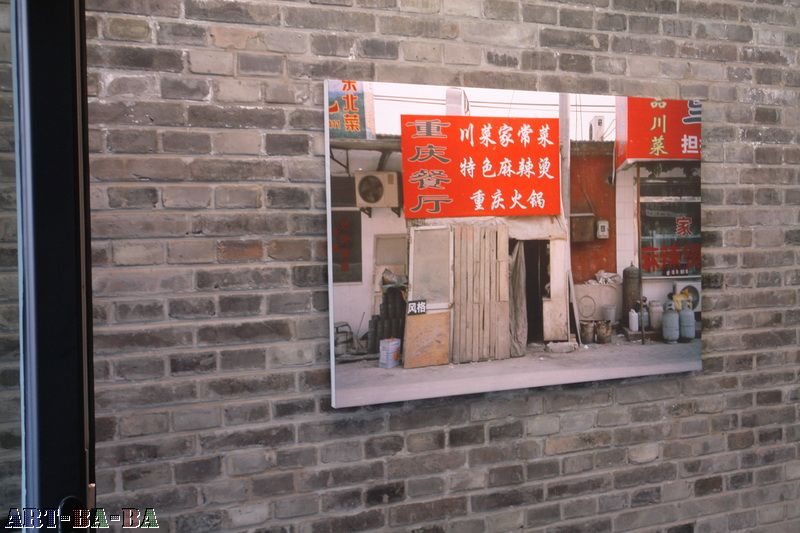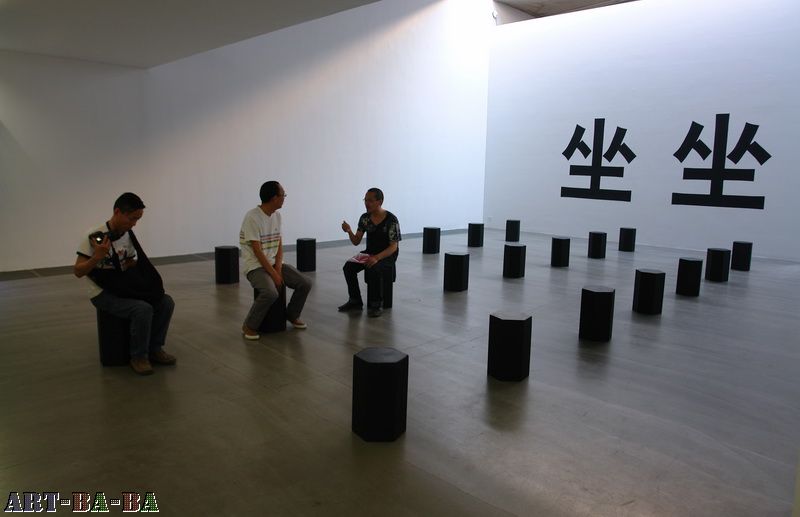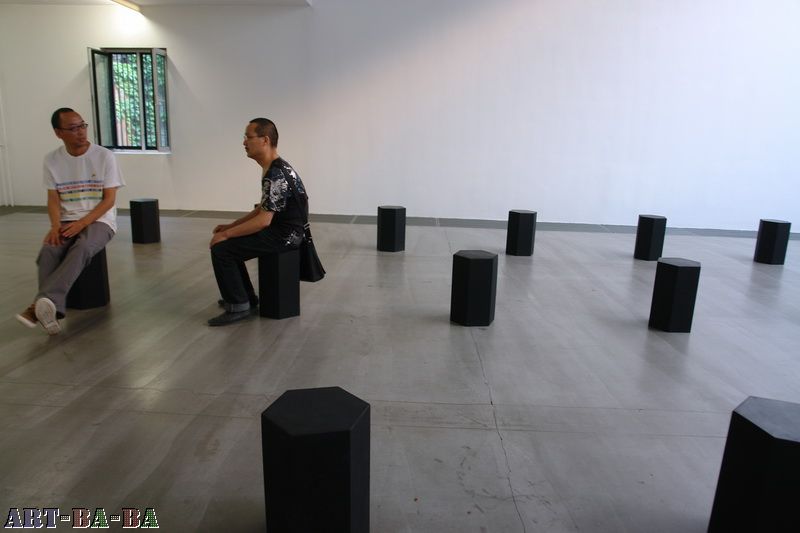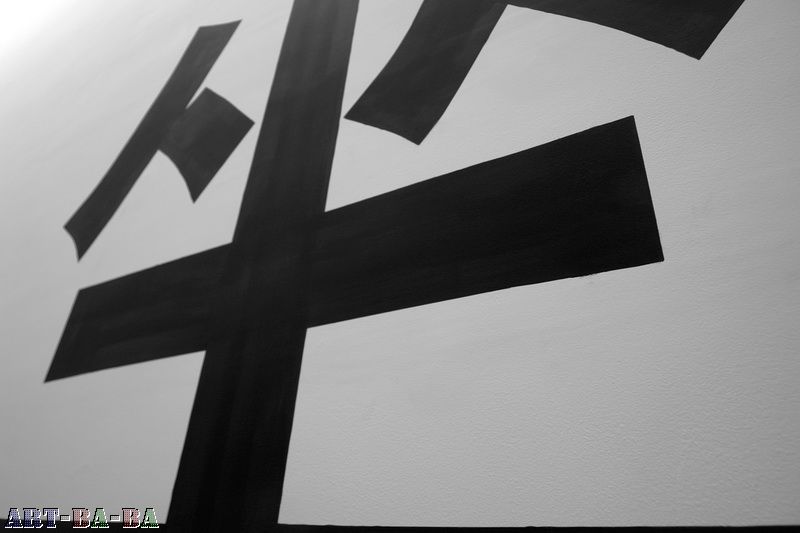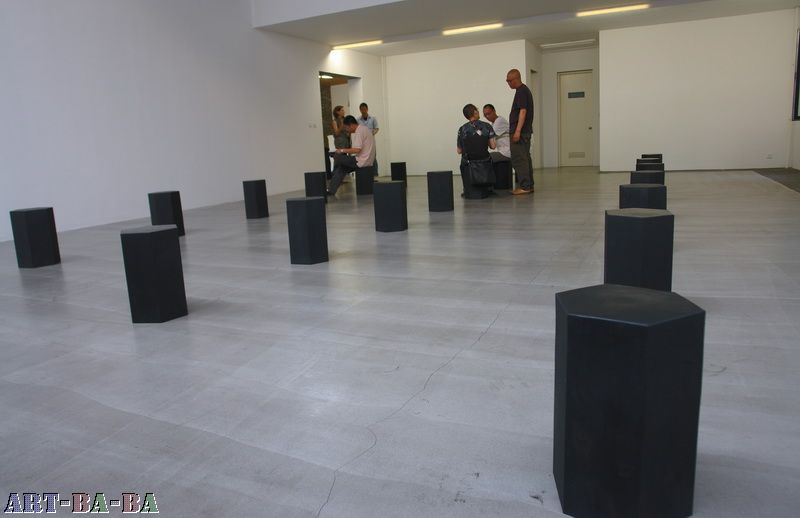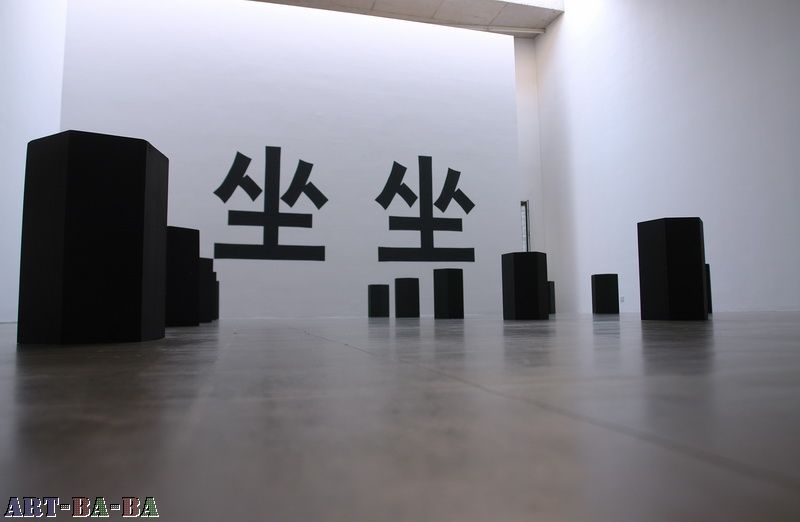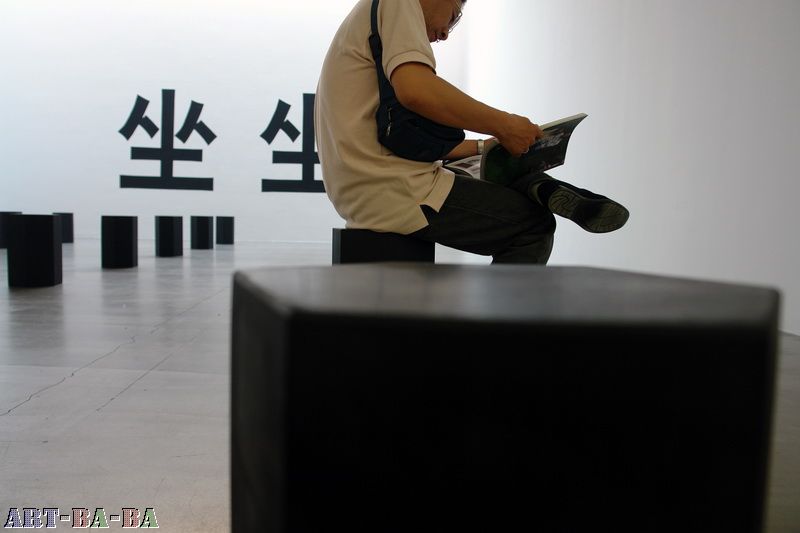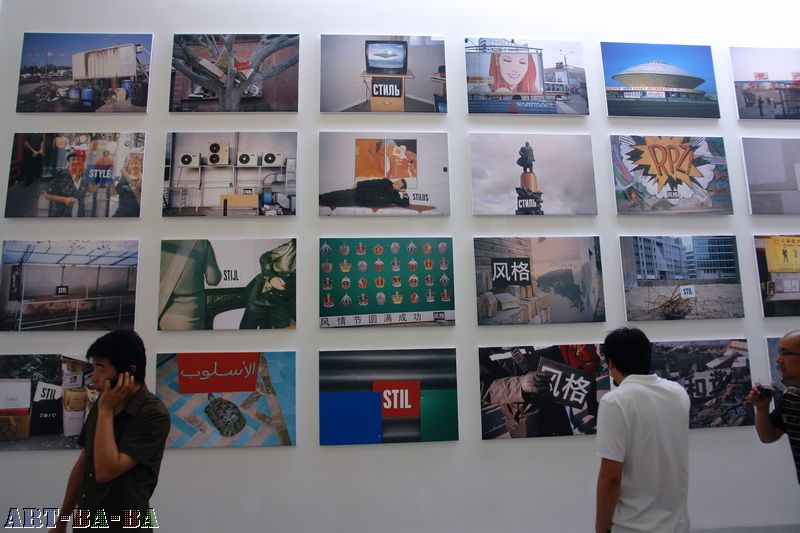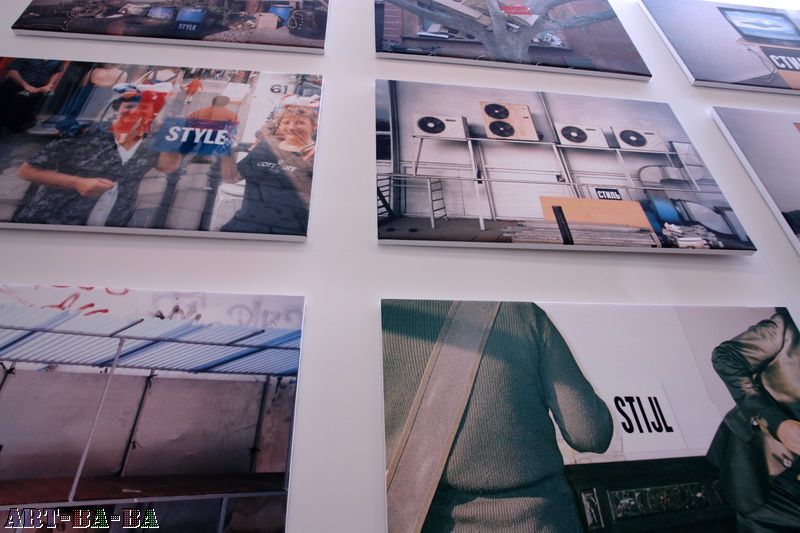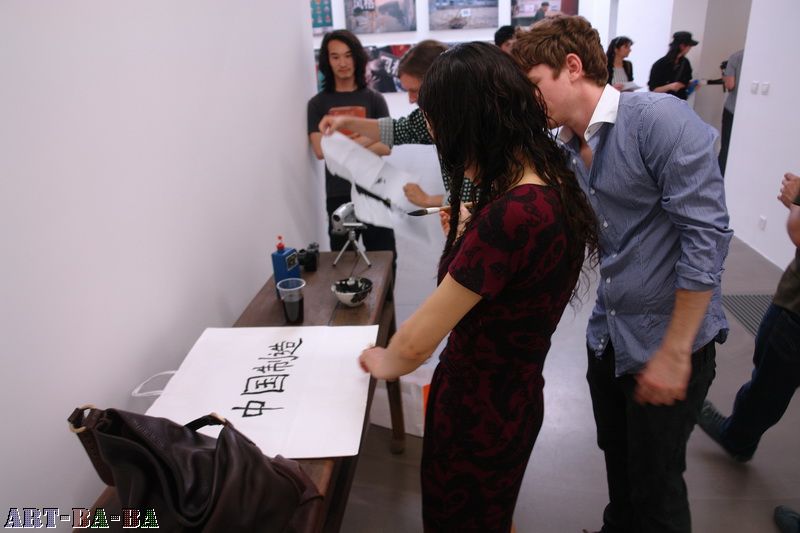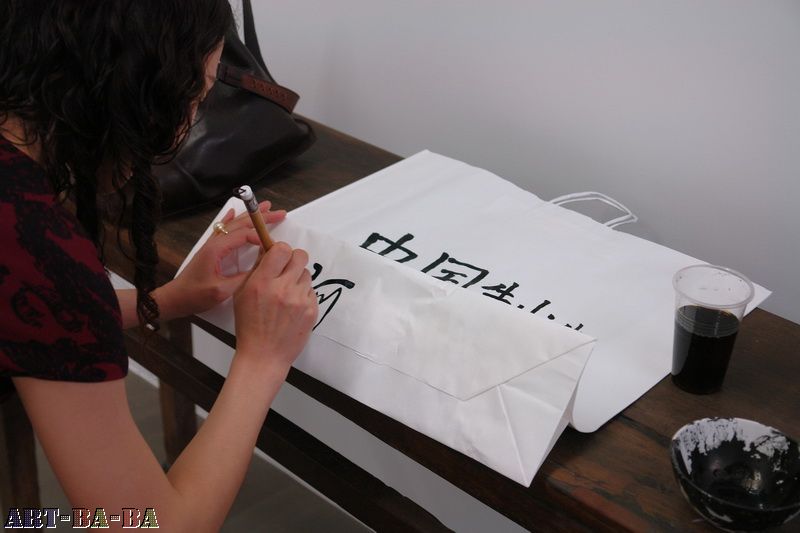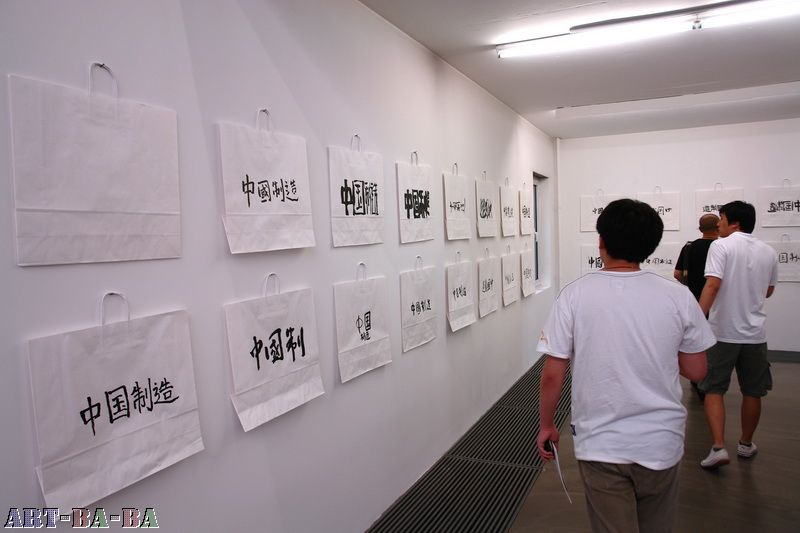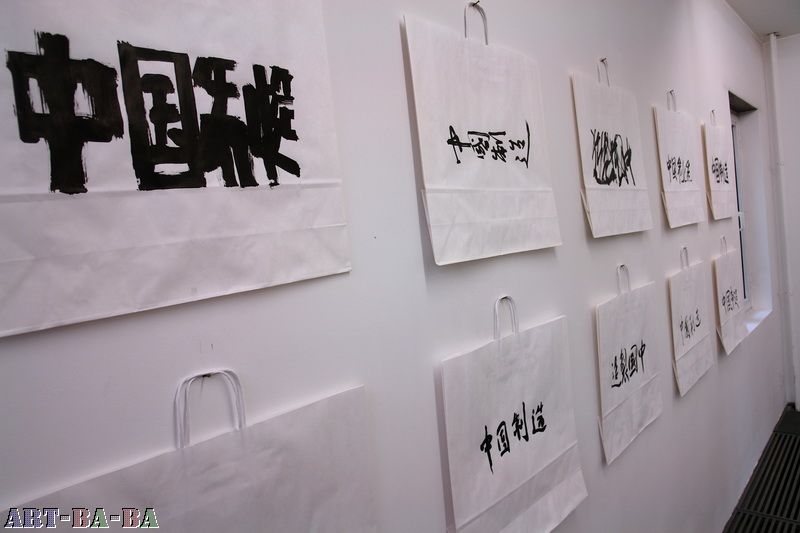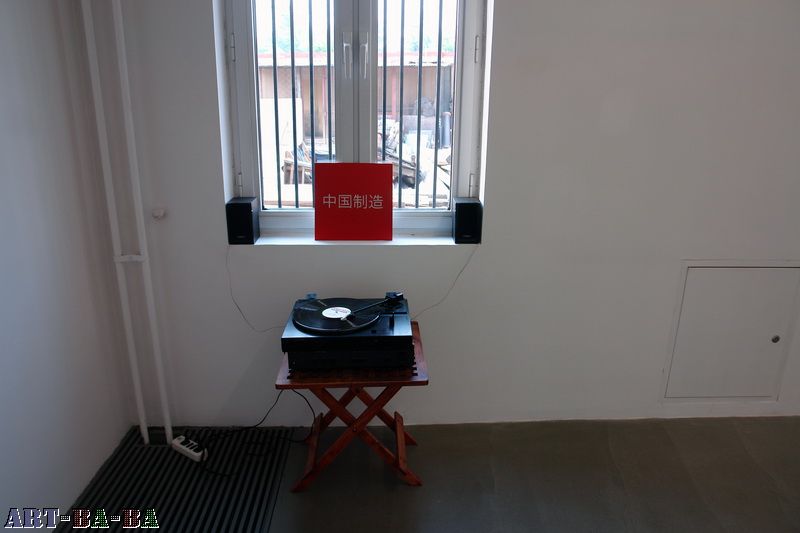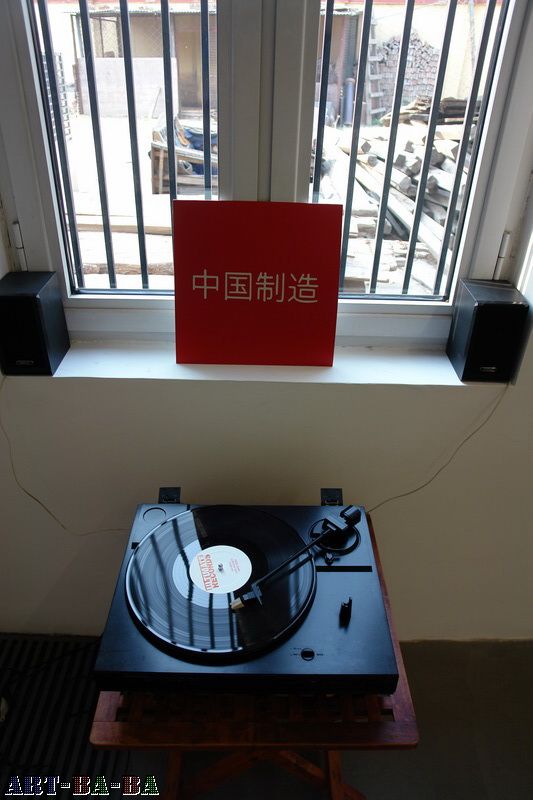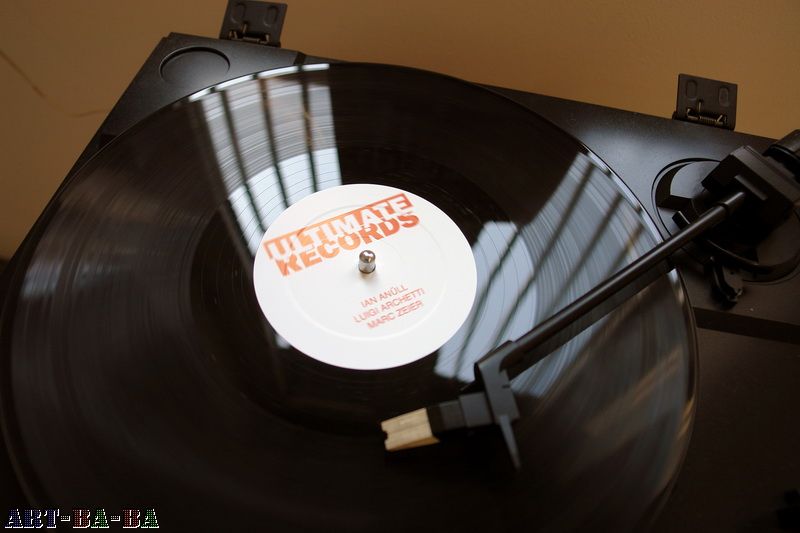[View] Roundtrip: Beijing-New York Now
May 22 - July 9, 2010
opening: May 22, 2010, 4 p.m. - 7 p.m.
Text source: Urs Meile Galerie Website
--------------------------------------------------------------------------------
STEPFATHER HAS AN IDEA! — Xie Nanxing
by Nataline Colonnello, 2010 (english)
Many of the classic fairytales from our childhood have taught us about the character of the step-parent: that viciously tricky figure who, incredibly talented in sedulously tyrannizing the good-hearted protagonist, is capable of any kind of wickedness in an effort to derail all the hero’s constructive plans. It is with knowingly accuracy and pleasure in subtle conspiracy that Xie Nanxing (*1970, Chongqing, China) amuses himself in his self-styled stepfather role and draws the viewer into his psychological games, starting with the choice of the name for his one-man show at Galerie Urs Meile Beijing-Lucerne, “STEPFATHER HAS AN IDEA!” Reminiscent of a crucial passage abruptly excerpted from the middle of an unknown story, the title verbalizes the same associative process that Xie Nanxing induces in the observer through the pictorial medium. In the earlier oil paintings executed until 2008, by means of the artist’s unique, ever-evolving and masterly technique and his intriguing interweaving of light and shadow, Xie Nanxing seduces the observer with alluring dreamlike images that, serving as an intentionally staged visual déjà vu, stimulate the observer’s curiosity, inner recollections, emotions, and darkest sides of the subconscious mind.
The exhibition “STEPFATHER HAS AN IDEA!” features two new series of works, each comprised of three paintings, which constitutes the whole production by Xie Nanxing between 2009 and the beginning of 2010. Although Xie Nanxing’s conceptual leitmotifs--such as sexuality and psychology--are still conspicuously detectable in all the six recent paintings, the two series “We” (2009) and untitled (2009-2010) not only dramatically differ from each other with respect both to content and style, but also embody a further--and now even more noticeable--experimental shift in Xie Nanxing’s artistic research. Since the 2008’s blue series of 3 works, entitled “The First Round of a Whip (also known as “The Wave”)”, in which the artist enacted a pictorial transposition of the Freudian theory of the “Slip of the Tongue”, Xie Nanxing has been even more openly dealing with the relation between two different forms of language: painting on the one hand, and writing on the other.
In “The First Round With a Whip” (No. 1, 2, 3), 2008, what at first seems to be monochromatic, semi-abstract and almost cartoon-like silhouettes gradually appear to the viewer, eventually turning into figurative subjects immersed in a hallucinatory, fluid-like three-dimensional atmosphere. In those paintings it is only after a long observation that the viewer is able to slowly identify a deeper narrative connection among the three images, each looking like disconnected stills from the same unfathomable story. After this stylistic climax in balancing abstraction and representation was reached in 2008, the next series Xie Nanxing created in the following year technically subverts the previous one, and this in order to put the observer in the condition of focusing on a totally dissimilar subject matter. Openly referring to the recent history of art, in this figurative series Xie Nanxing reinterprets three lesser known works by Francis Picabia (Paris, 1879-1953), analyzing the social, artistic, political and private aspects in the life and career of this irreverent and much discussed artist. The title “We” reveals the closeness Xie Nanxing perceives to the French/Spanish master in terms of unceasing artistic experimentation and the sensual dimension of the works. The three works Xie Nanxing reproduces in a larger scale and in black and white are “Femmes au Bull-Dog” (1940-1942), “Deux Femmes au Pavots” (1942) and “Nu” (1942), originally colourful realist nudes, drawn from source materials that included pin-ups, postcards, pulpy photo novels and erotica, realized during the period when Picabia was no longer actively engaged in the avant-garde mainstream. Xie Nanxing’s decision to newly paint the works in black and white is due to the will to stress the division in judgment of the critics during Picabia’s time. When Picabia’s paintings first appeared, a small number of critics positively commented that these works were aimed to ironically and provocatively oppose a contemporary, mass-produced kitsch aesthetic to the classical concept of beauty found in the works of famous nude painters like Ingres. The majority of the experts, however, labelled them as purely commercial and deprived of any genuine artistic value. Like a wink to Picabia, the only written statement with which Xie Nanxing directly glosses each of the three paintings belonging to the series “We” is the signature, jocularly made up of the transliteration of Picabia’s surname into Chinese characters.
The use of the written language plays a central role in the most recent series, untitled (No. 1, 2, 3), 2009-2010. In these paintings, Xie Nanxing carries out an extreme formal simplification, where the figures are turned into basic shapes and both the identification of the characters and the description of the scene, including tactile, visual and olfactory sensations, is made possible by deciphering a few hints, namely, the Chinese characters left on the canvas as they were clues in a mystery. The artist’s personal reinterpretation of the fairytale Snow White, with its strong sexual/ironical allusions and a crescendo of violence culminating in untitled (No. 3), suggests either an orgy or the perpetration of a group rape in the framework of a seemingly incestuous family relationship. In untitled (No. 1) 220 x 385 cm, and untitled (No. 3) 220 x 385 cm, the composition indeed recalls a crime scene sketch-map reminiscent of those employed by the po:ice in the reconstruction of a murder, where the “victim” – Snow White – lays in the centre, surrounded by the seven other characters. Besides the structure, untitled (No. 1) and untitled (No. 3) share Xie Nanxing’s distinctive pictorial technique where the Chinese characters are not written but treated as any other part of the painted composition, and thus appear blurred to the eye. Unlike the other two works, untitled (No. 2), 220 x 325 cm, smaller in size, is arranged and painted in a significantly different way. This is because the artist wants the observer to use other means to discover the image, and also due to the fact that the function of text differs from the other works in the series. When looking at the painting, the viewer initially sees Xie Nanxing’s personal notes quickly scribbled in charcoal at the margins of the work, abstract blots of colour in the centre of the composition, and only a few fragments of bodies, represented in a comic-like style, appearing outside the borders of a second, smaller missing painting that has eventually been removed from the canvas. In order to imagine the picture Xie Nanxing originally painted, the onlooker is therefore forced to analyze the few visible figurative traces through which the well-known fable comes back into mind –the bow in the hair of Snow White, the cap of a dwarf—and to slowly follow the image toward the centre of the picture. What tells us that this painting is not a mere reproduction of a famous image from our infancy are the instructions the artist seems to have recorded only for himself, such as, “pay attention to the gesture of the hands”, “testicle”, “passivity” or again, knowing Xie Nanxing’s code, “stepdaughter’s second adventure”.
Subtle Sabotage
by Gerhard Mack, 2010 (english)
Ian Anüll’s art transforms the everyday, while simultaneously making it possible to perceive the values and conditions we live with from day to day.
During his first visit to the People’s Republic of China—a sojourn as artist-in-residence at Galerie Urs Meile in Beijing in 2008—Ian Anüll (*1948, lives in Zurich, Switzerland) asked passersby on the street to write the words “Made in China” on pieces of canvas. A tutorial in Chinese made it easier to understand each other. In return, each person received a bar of Swiss chocolate; when the artist offered each participant ten euros, they all refused. China is not only the most populous country on earth, but during the past decade of globalization, it has established itself as the world’s workshop, whose products are synonymous with speedily manufactured, cheap goods of frequently doubtful quality. At the very least, the label “Made in China” implies that this country, with its masses of people, produces mass-manufactured products for everyone else around the globe. Anüll’s art action reverses this cliché and instead draws attention to the individual human being, who can be easily forgotten in light of the large numbers of other people. About seventy times, Anüll asked individual Chinese people to write out the label in their own handwriting; afterward, each one signed the canvas on the back. Both the canvas and the paint were made in China, and the authors of the works ranged from construction workers to managers—all belonged to different social classes, professions, and age groups. The label identifying a product’s country of origin, which is the most ordinary thing in world trade, was given a unique feature: the handwriting of individual persons. This has even more impact when we remember that writing is a kind of drawing, and that, since the start of the early modern era, our Western culture has considered drawing to be the most direct expression of artistic intention, whereas, in Confucian China, calligraphy was regarded as one of the highest of all the arts. In this group of works, art comes to the street, amalgamating everyday objects, and—unlike the situation of the art market—it is not paid for with the universal accounting unit of money; instead, an exchange of goods takes place.
In his exhibition Take a Seat, at Galerie Urs Meile in Beijing, Anüll takes the situation a step further: he asks fellow artists from China to write “Made in China” on white paper (of the sort used for grocery bags in Switzerland) and then to add their signatures. Any profits from sales are split three ways, among the gallery, Anüll, and the other artists. Contemporary art has been one of China’s big exports for a good ten years, and many artists have established their own “brands” under this general rubric. Expressing this, while at the same time retreating behind a label that designates origin, probably takes some courage and effort. Every participant defines himself—at least, in Anüll’s group of works—as a producer of goods, which are nothing more than each artist’s own perceptions, ideas, emotions, and visions, all translated into visual language. These artists point out that they are taking a deeply personal part of themselves to market.
Anüll’s art always targets the heart of the present-day, and right now, that heart beats inside the economy. In countless works, the artist has shown how the capitalist structure influences our views of life; how money, as a general medium of exchange, subjects human interaction to the conditions of supply and demand; and how we often determine the inner worth of something by measuring it against its price. As an artist, however, Anüll does not operate as a critic. Even before globalization, the world was already too strongly interconnected for anyone to confront the fundamentals of society head-on. It is easy to reject something, but much harder to influence perceptions by making people look at places where there are distortions and ruptures. In our age of ironic cynicism, this can actually only be accomplished by shifting things around slightly. Anüll is a master at this. He punches holes in paper currency, making the bills clearly worthless, while allowing us to wonder how we might have used it to indulge ourselves; he treats serially manufactured products—like the masks available at African airports—as if they were originals, and thus nonchalantly brings up the issue of the relationship between a copy and an original; he has new postmarks stamped onto old postcards, thus subtly guiding our attention to the time that has passed between then and now.
These interventions are always nearly trivial, and often they are not immediately apparent. As an artist, Anüll travels light. He prefers the things he finds at the exhibition site. He is someone who discovers things, and he uses his infallible sense of material qualities to transform these intangible or tangible found pieces. His materials generally cling to their origins and yet they are transferred to another context, in which the meaning of art is examined. Out of this, the things that come from the everyday world take on the capacity to irritate or disturb. The second group of works in this show, the “style” works, is paradigmatic of this ability. The word “style” is written in different languages on a plain panel, and wherever it is shown, it redefines the context in which it is displayed. “Style” is a concept that signals membership in the upper classes and excludes those who have no style or do not know what the fashionable style happens to be at the moment; here, it becomes the key that opens up everyday codes. Examples might be the “energy dialogue” with the briquette pieces in Beijing, a geometrical floor pattern in Morocco, or a cashier’s sign in a shoe shop in Shanghai. Each time, the “style” panel transforms the situation, providing a commentary that seems like a little act of sabotage.
The fact that, when it detonates, it can make an incredible noise in our minds, becomes clear when we see the stools that Anüll has had made for Take a Seat. In form, they resemble the rubber bullets Swiss po:ice shoot at demonstrators. Monstrously enlarged, they mutate into harmless designer objects, which could easily fit into an IKEA environment or into the most expensive homes of art collectors. Questions about the ways that democracy is viewed in different zones around the world are linked to art, when we recall, for instance, the five hundred pieces of Walter de Maria’s sculpture, The Broken Kilometer (1979), an icon of Western art, which the artist mentions in a conversation. In Ian Anüll’s work, the political and the aesthetic, the simple and the complex, the tangible object and the unfathomable philosophical question are separated by a mere associative thought.
Translation: Allison Plath-Moseley
Exhibition views: Xie Nanxing
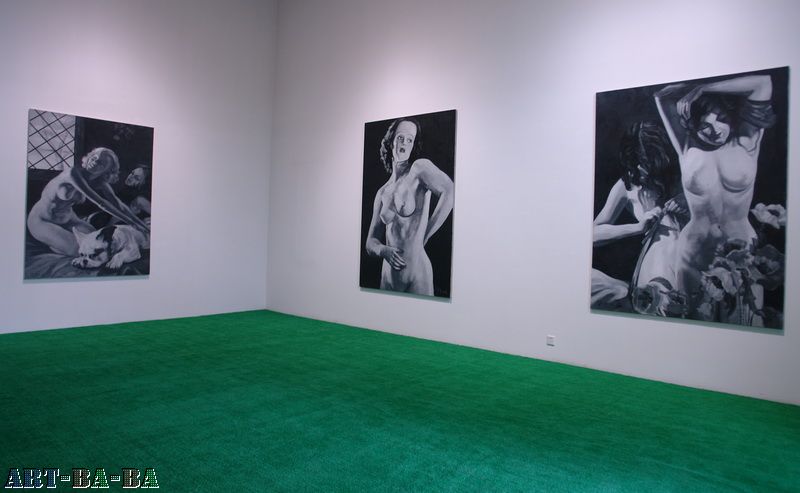
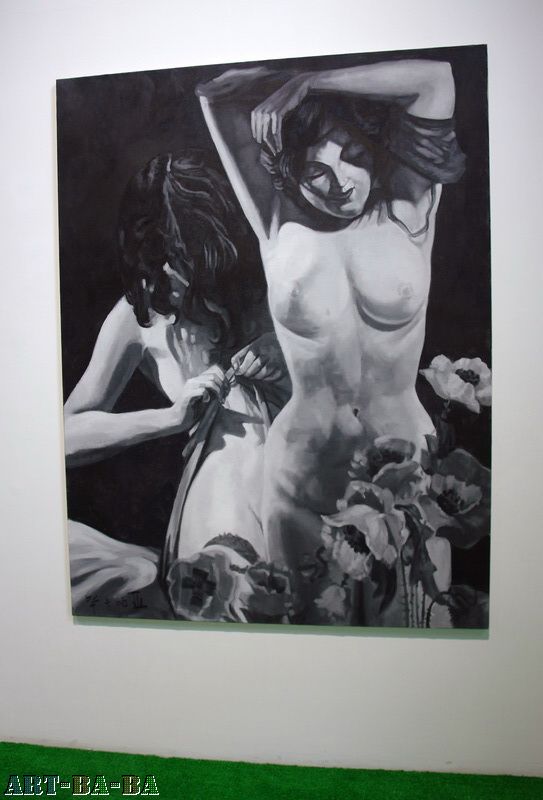
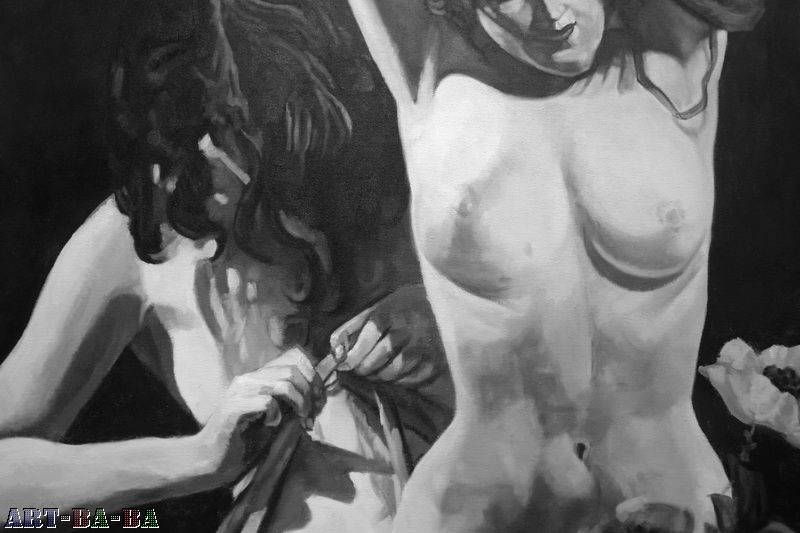
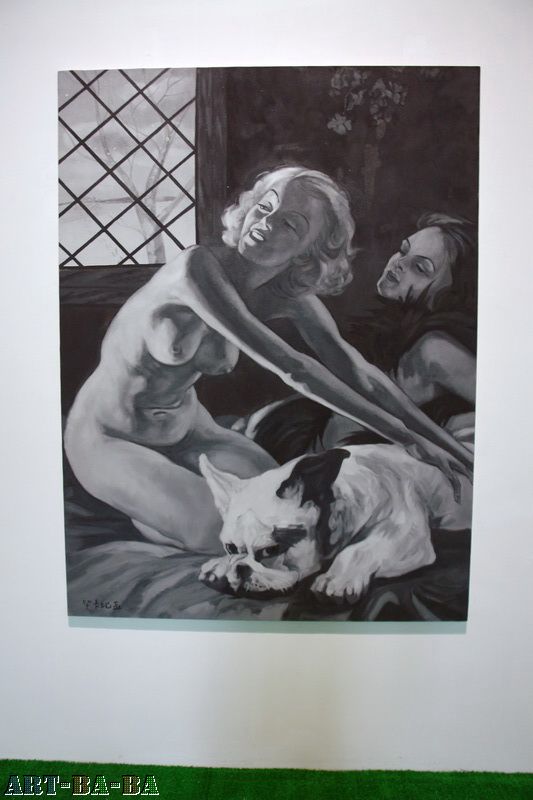
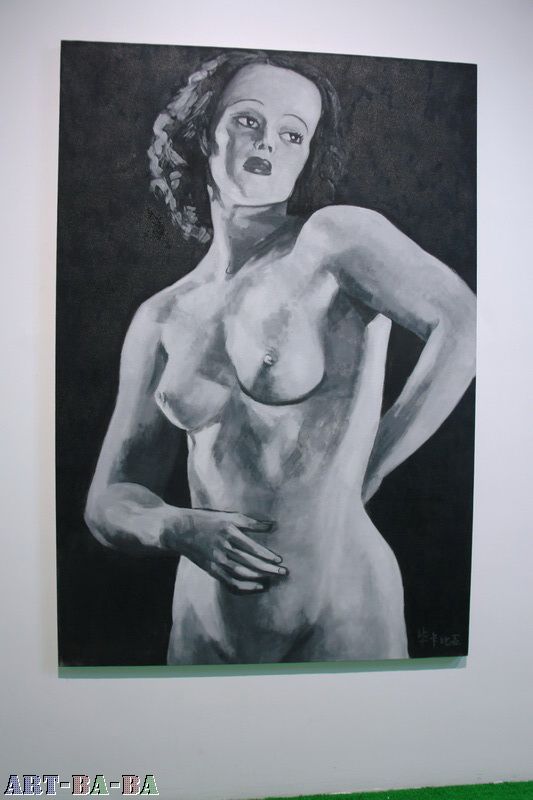
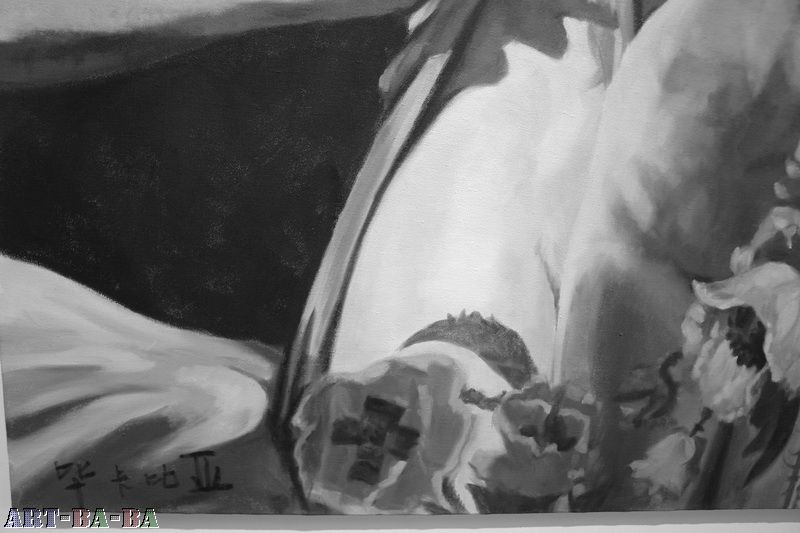
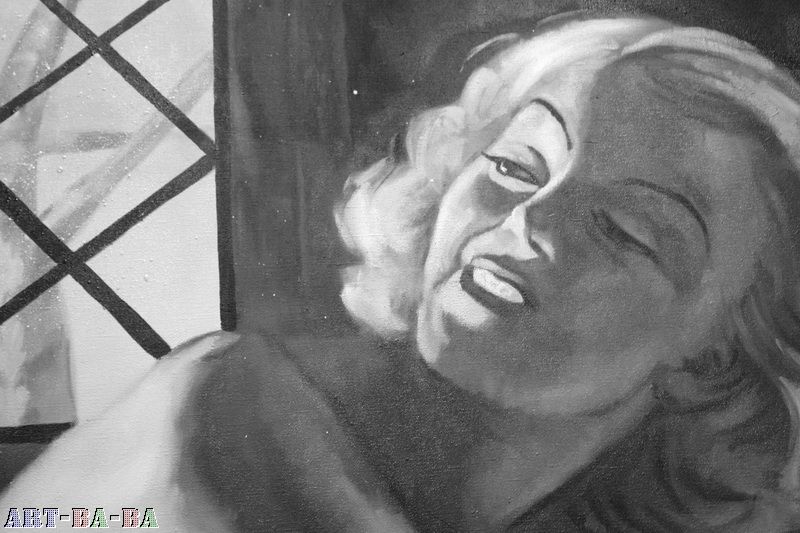
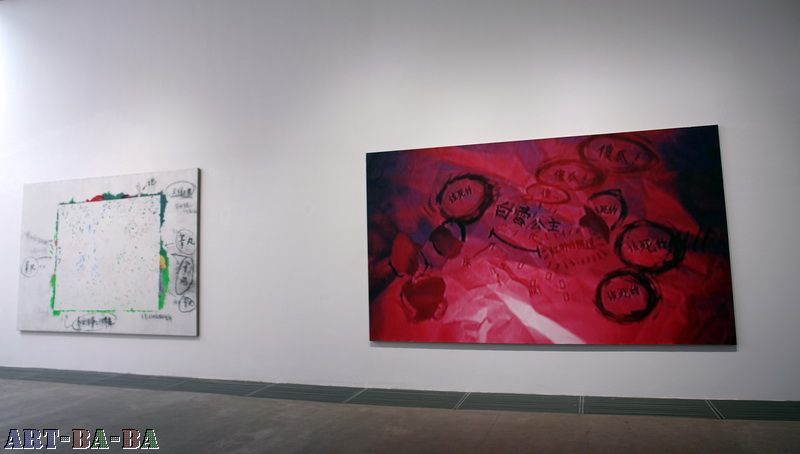
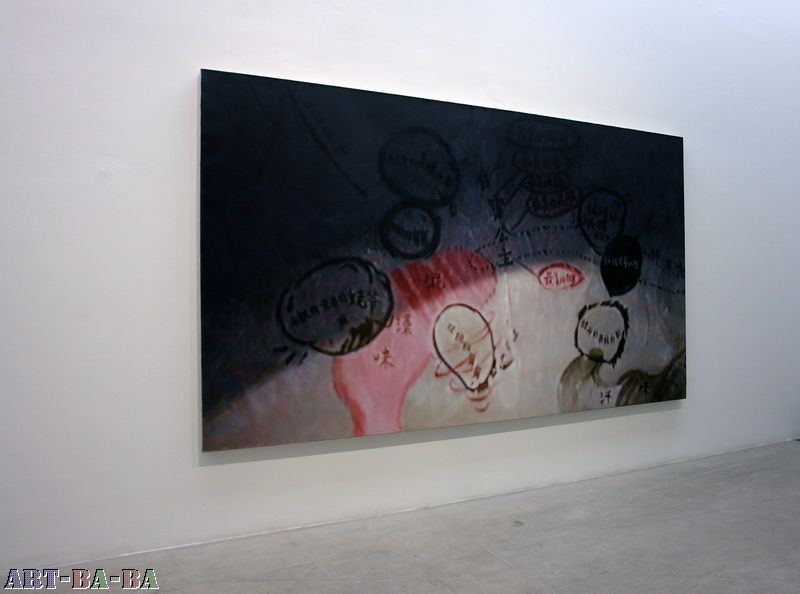
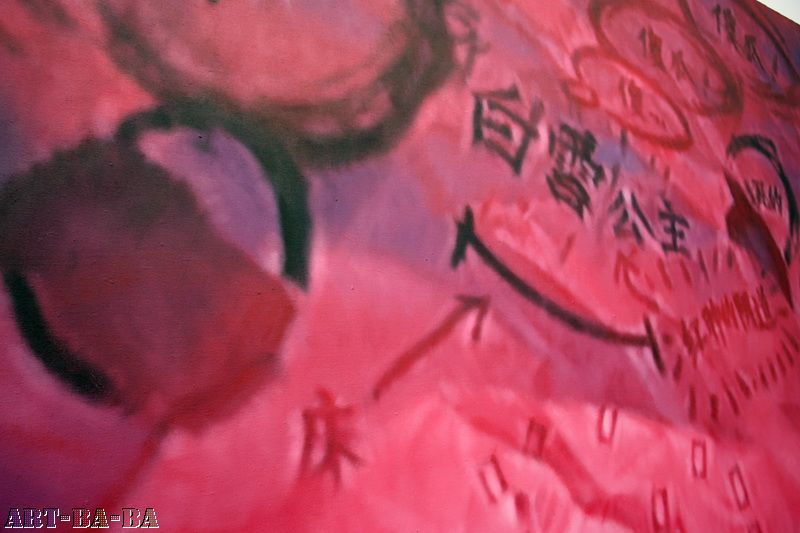
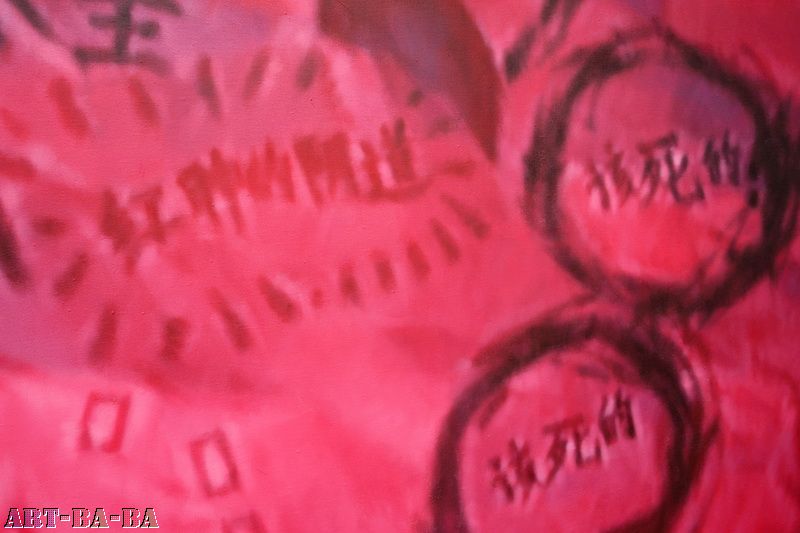
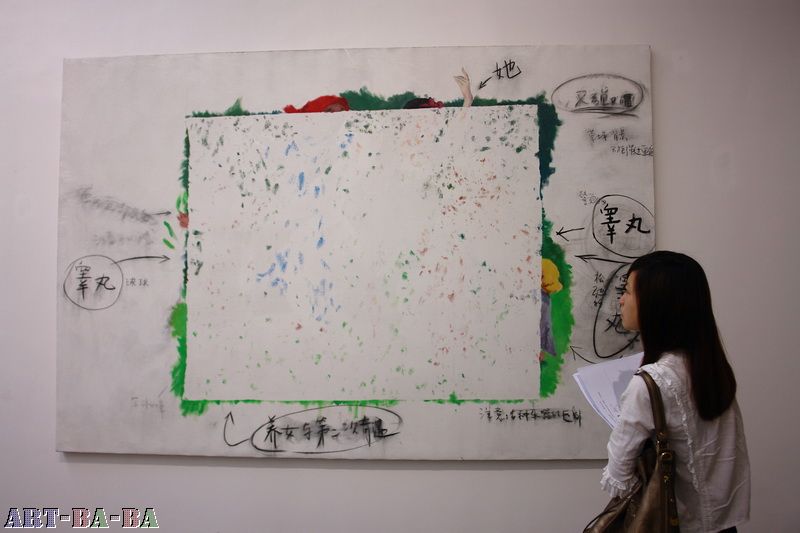
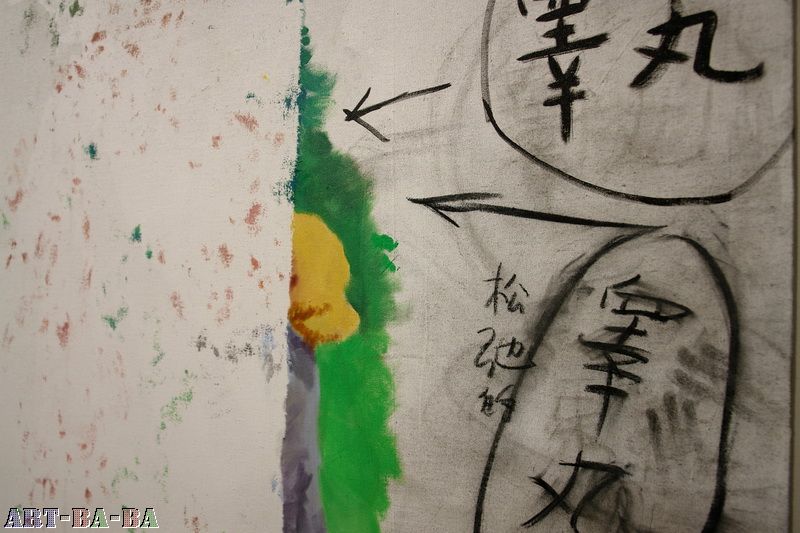
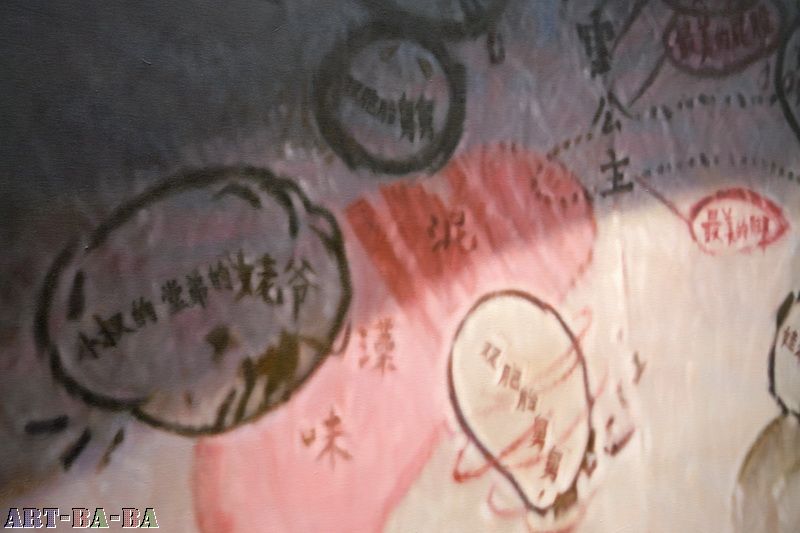
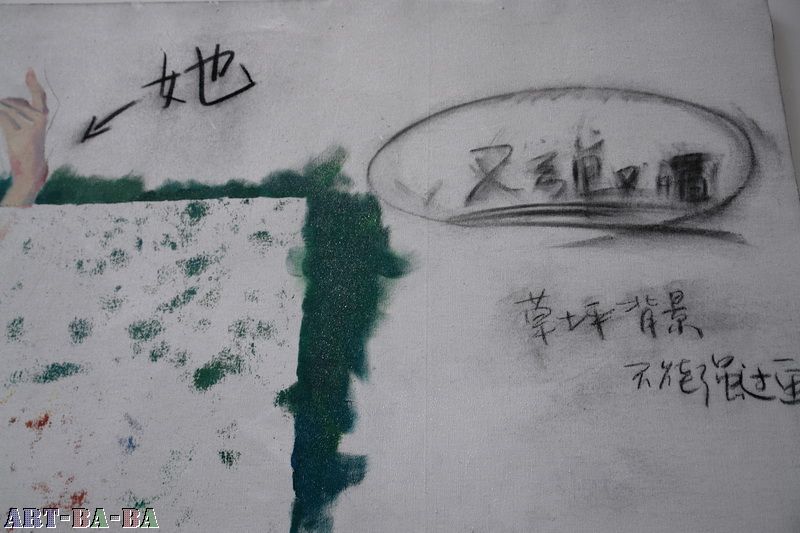
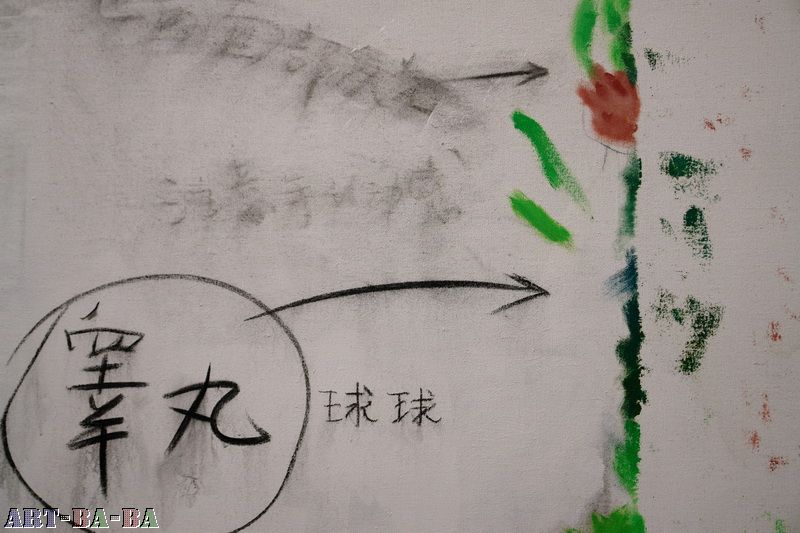
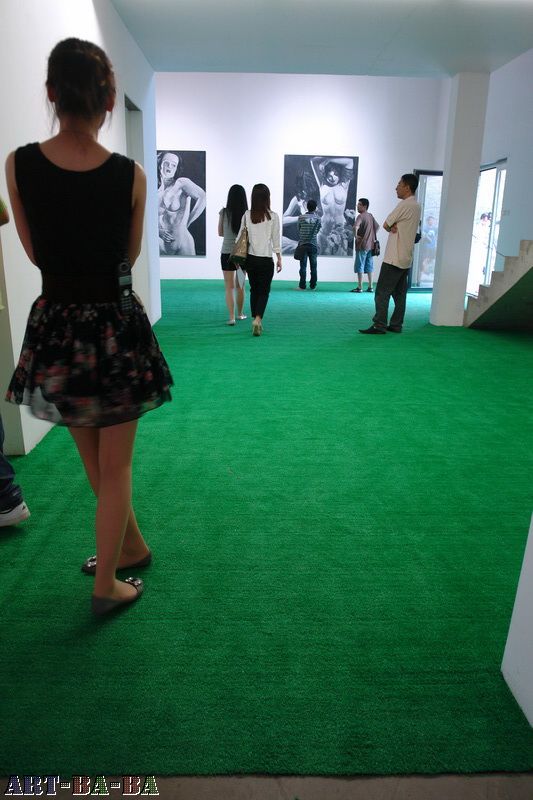




Exhibition view: Ian Annul
